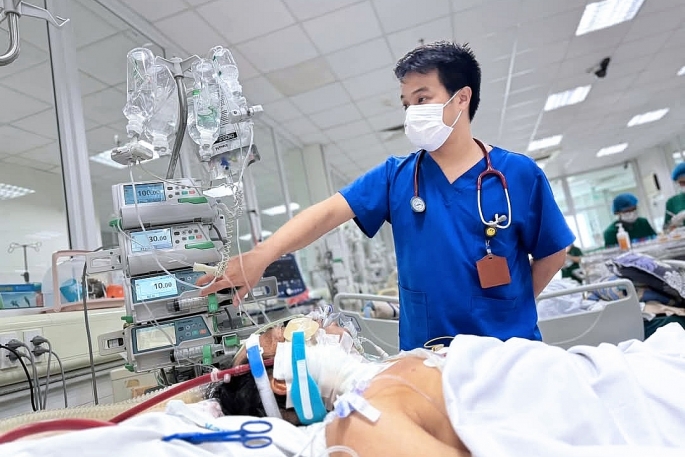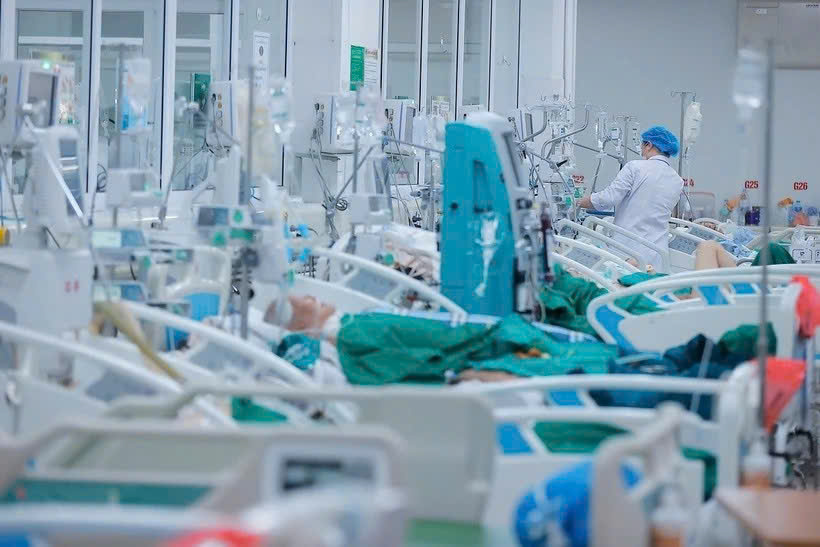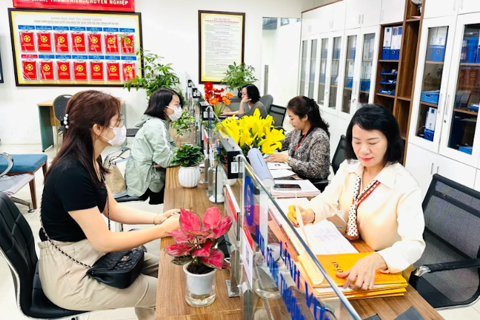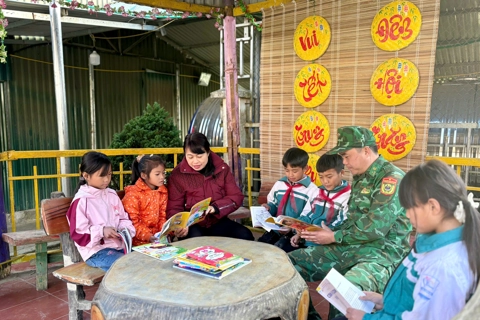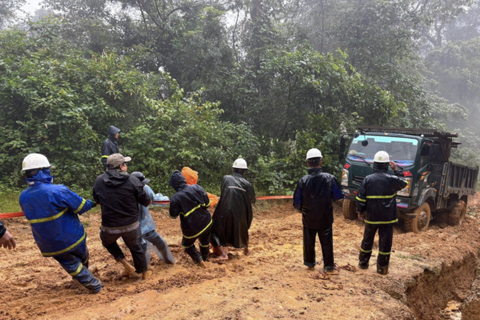Hanoi: Anti-seasonal disease measures intensified
The life-threatening diseases can be caused by climatic and weather conditions during the winter-spring period, characterized by monsoon winds, dry air, and high humidity.
People in Hanoi need to step up their precautions against seasonal diseases during the winter-spring season, according to Dr. Vo Duc Linh of the Intensive Care Center at the National Hospital for Tropical Diseases.
He said hospitals in Hanoi have seen a surge in flu cases, with a number of patients suffering respiratory failure and requiring intensive care.
"These patients are hospitalized in critical condition, suffering from shortness of breath and requiring mechanical ventilation or extracorporeal membrane oxygenation (ECMO). We are currently treating over ten patients with severe influenza, some of whom require ECMO support," Linh told The Hanoi Times.
A patient with influenza A is under active treatment and requires ECMO support. Photo courtesy of the National Hospital for Tropical Diseases in Hanoi |
The cause is attributed to climatic and weather conditions during the winter-spring period, characterized by monsoon winds, dry air, and high humidity. These factors facilitate the spread of pathogens, increasing the risk of respiratory and gastrointestinal diseases.
"Many people underestimate the flu, assuming it is a mild illness and not seeking medical care. But in people with weakened immune systems, the flu can lead to serious complications, making emergency treatment a challenge. Early detection and treatment are critical," the doctor said.
Patient Luong Thi Len, a 53-year-old resident of the northern province of Ha Giang, suffered symptoms of cough, fever, and shortness of breath, but opted to self-care at home. After three weeks without improvement, she was hospitalized and tested positive for influenza A.
Her lungs were severely damaged, with almost total impairment on both sides, resulting in carbon dioxide accumulation and complete loss of ventilatory function. Doctors had to put her on ECMO and her vital signs temporarily stabilized.
The second severe case is Trinh Van Huyen, a 60-year-old man from Quang Ninh Province with a history of chronic obstructive pulmonary disease. His respiratory failure worsened, requiring intubation, tests confirmed influenza A. After two weeks of treatment, he remains intubated and is fed through a gastric tube as he is unable to eat on his own.
People warned to take precautions
Hanoi has seen an increase in influenza A cases over the past two weeks, with more patients requiring mechanical ventilation.
Most patients are elderly and have underlying health conditions. Photo: Minh Quyet/VNA |
The National Hospital of Tropical Diseases says it is currently treating more than 10 severe flu cases with underlying health conditions. One of them, a 66-year-old patient who also has type 2 diabetes, was infected with both influenza A and Covid-19. He has since been placed on a ventilator due to severe respiratory failure.
Meanwhile, the Vietnam National Pediatric Hospital has also been receiving 100 to 150 children a day for examination and treatment after showing signs of flu. In particular, 15% of the infected children have been hospitalized and require medical care.
"Some severe cases have also suffered from lung damage after a few days of virus infection. Seasonal flu is mainly caused by influenza viruses, mostly A/H1N1, A/H3N3, and influenza B," Linh told The Hanoi Times.
Young patients with influenza A usually have mild symptoms. However, the elderly, people with cardiovascular and respiratory disease, and children under five have a higher rate of serious complications and death," he explains.
To prevent the diseases, Dr. Linh said people should wear face masks, regularly wash their hands with a disinfectant, limit physical contact with people who have the flu, and seek medical care if they experience flu symptoms.
Proactive prevention efforts needed
According to the Hanoi Department of Health, the overall infectious disease situation remains under control, but there have been a number of rising cases in certain localities.
To proactively prevent and control infectious diseases this season, the department has asked local governments to closely monitor the infectious disease situation in their respective areas. The health sector is requested to collaborate with the education and training sector to disseminate infectious disease prevention in schools, especially preschools and kindergartens.
People with symptoms such as cough, fever, runny nose, headache, and fatigue should not self-medicate or perform home tests. They should seek medical advice and treatment.
The public is advised to: wear masks; wash hands with soap and water or use hand sanitizer, especially after coughing or sneezing; avoid spitting in public places; cover mouth and nose when coughing or sneezing to reduce the spread of respiratory droplets; limit contact with people who have or are suspected of having the flu; maintain a healthy lifestyle, including physical activity, to strengthen the immune system.
Healthcare facilities must ensure the availability of drugs, vaccines, supplies, equipment and personnel. Hospitals must maintain a 24-hour emergency response capability, promptly address situations as they arise, and ensure compliance with infectious disease reporting requirements.
The facilities should encourage families to immunize their children and pregnant women fully and on time.
According to the World Health Organization (WHO), seasonal influenza is also increasing in many countries in Europe, Central America and the Caribbean, West Africa, Central Africa and Asia. Cases of influenza A(H5) associated with dairy cattle and poultry continue to be reported in the US.
"Our main concern is that the avian influenza virus could acquire the full capacity to be transmitted from human to human. The resulting virus would be highly pathogenic and transmissible," said Dr. Shigeru Omi, WHO's Regional Director for the Western Pacific.

